News from the workshop: As you may have read, we received another First 27 SE around February this year. Literally on the day 365 days after my GEKKO had been delivered this new boat arrived at our yard. Basically, the owners met me on my boat, we went out for an hour or so and they had so much fun and liked mine that they ordered an exact copy of GEKKO. Well, not quite exact: We decided to have one detail changed. And this decision has now spawned into a multitude of new jobs and challenges.
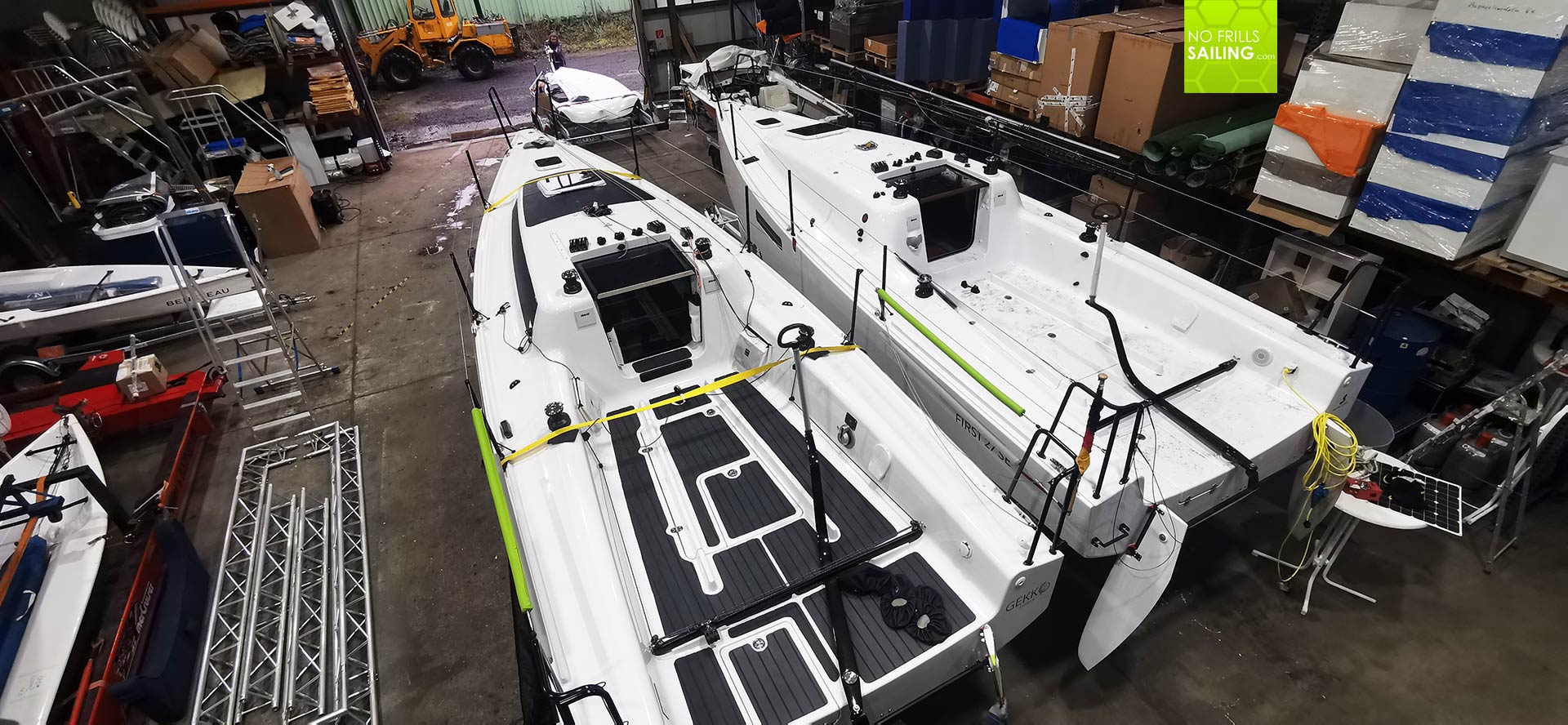
Back in the day, Covid 19 was still an issue but the current supply-chain-disruption and delivery-craziness had just started to have effects on our business, it was emphasized that we may not fit the electric engine-setup of German manufacturer Torqeedo to this new boat but to switch to the competition. At that time the Cruise 4.0 wasn´t available anyway due to circumstances and so Shanghai-based brand E-Propulsion was brought up on the table. This product is challenging market leader Torqeedo, at least here in Germany, for quite some time now and their products have been building up quite a reputation of being of at least comparable quality. What really made the difference was their track record in providing a good service.
Finding the right engine for the boat
Now, our owner-clients greenlit the project and we started to check the E-Propulsion range for an engine that could be fitted to the First 27 SE. We soon learned that their range of products, at least the smaller engines, may seem comparable to Torqeedo. But it actually isn´t. E-Propulsion´s engine size of some 6 to 10 horse power equivalent is called “Navy”. My Torqeedo Cruise 4.0 develops 8 hp-equivalent – but E-Propulsion has no Navy with that power. Their Navy 3.0 does have 6 hp equivalent, the Navy 6.0 tops out at 10 hp. Too big. So we opted for the Navy 3.0 as we reckoned that the use case for the engine is 99 per cent berthing-related. Done!
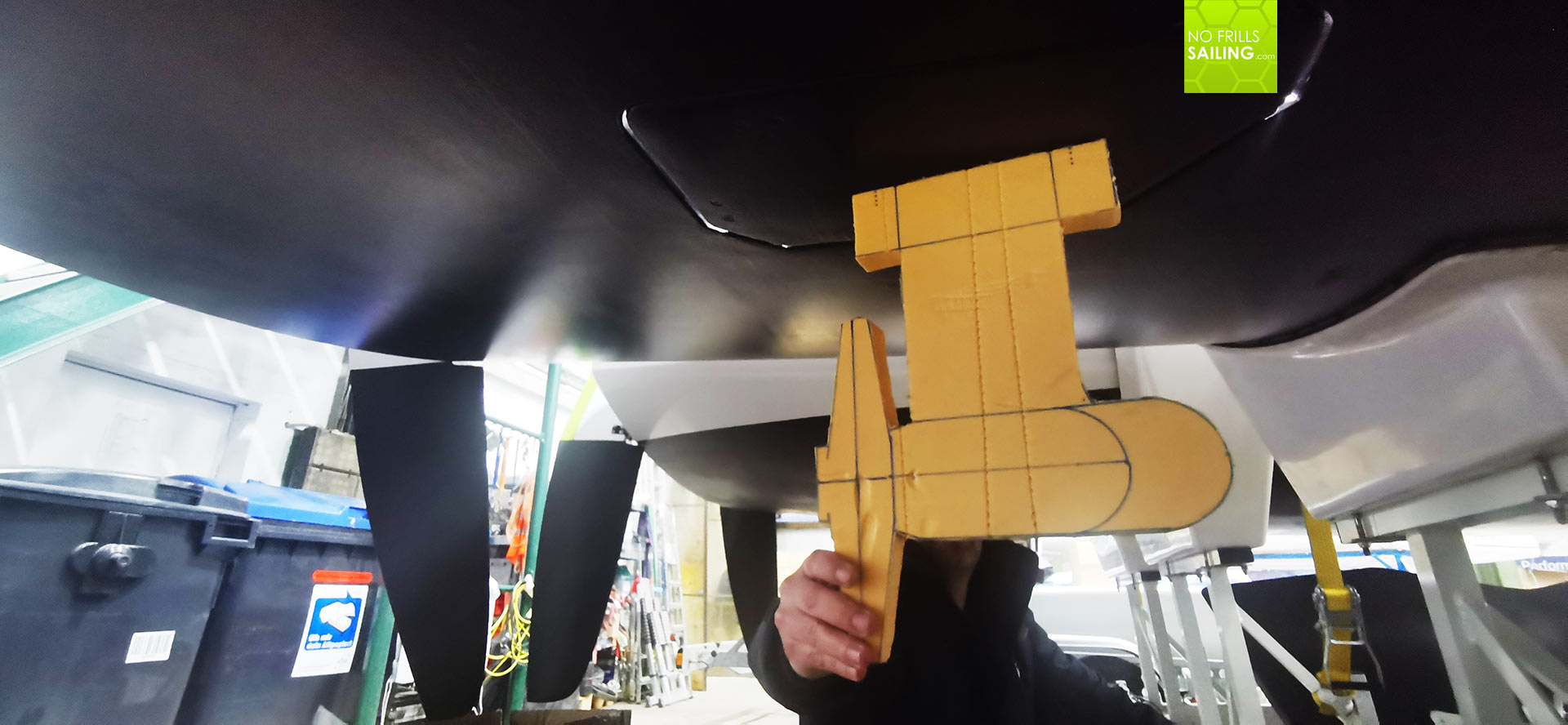
Our order arrived fast and complete. Checking the quality we noticed less plastic parts, a fine, solid feel of all of the parts and all of our workshop-guys gave me a thumbs up on this brand. We were in good mood and started fitting. The good mood stalled after 5 minutes because the propulsion unit turned out to be too big to fit through the engine-shaft of the First 27 SE. A downside of E-Propulsion compared to Torqeedo: All parts seem to come with bigger measurements. For our project, that was a killer. Last chance: Pod drive! Our technicians made a quick 1:1 foam mockup model of the pod and checked for its dimensions. At least, it seem to fit perfectly.
A Quality Check
So we ordered it. Exchanging the parts and getting delivered the Navy 3.0 Pod was a no-brainer (a nod to their known service and reaction speed). We unboxed the new parts and again rejoiced of a nice, heavy feel and good quality of the parts. A quick check showed that the pod-drive alone would fit well through the engine shaft of the boat and so our craftsmen began to think hard to come up with a solution.

As any other outboard engine will do, the engine to drive a First 27 SE must be fitted to a bracket. This bracked is able to slide up and down on a rack which itself may be folded aside. This – at first seemingly weir and complicated – motion ensures the engine unit to be retracted fully into an engine compartment under the cockpit of the boat. A flat will fold down to close the engine shaft, thus making a nice, hydrodynamically perfect underwater shape with no props or saildrives – or even pods – still out in the water slowing down the boat. This, of course, was not the case with a pod drive as this is meant to be mounted underneath the hull to be in the water permanently.

We are happy having such motivated people in our company. One of them is a dedicated mechanic. After showing him the task – using GEKKO as a role model to demonstrate the situation – he immediately started sketching around and making cardboard models of a bracket that would emulate the long shaft of my Torqeedo Cruise 4.0 but make the E-Propulsion 3.0 pod fit neatly. This bracket is now under construction.
Custom made stainless steel swinging arm
The task is to make an attachment point, just like the ones we have on ordinary outboard engines, with two screw-clamps, to connect engine bracket, which still comes from the yard, with the pod. We now need a shaft that must be thick and strong enough to transmit the forces generated by the engine into the boat´s structure: At least these are six horses pushing and pulling the boat!
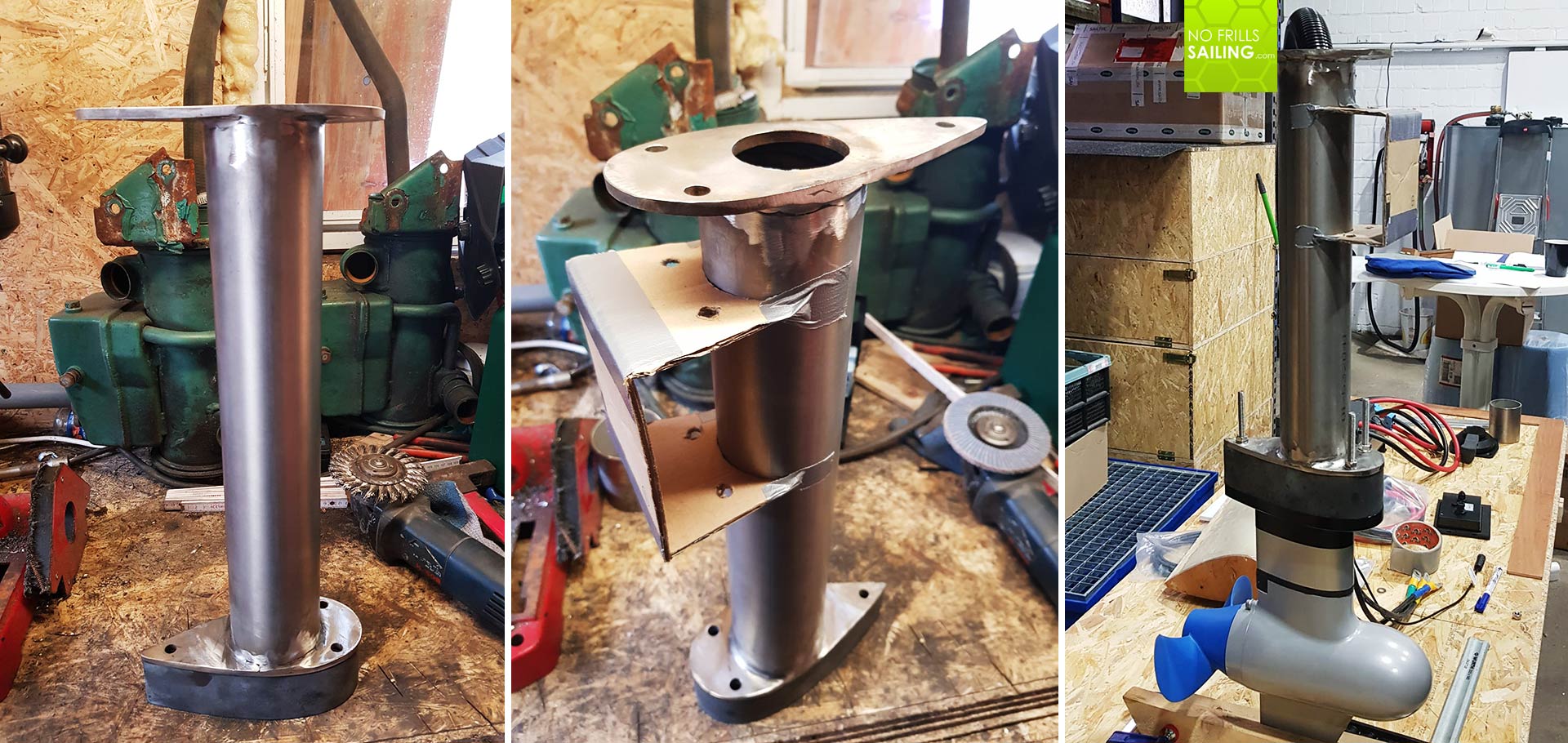
A solit stainless steel tube was chosen. Thoroughly measured and checked back and forth from time to time, attachment plate and shaft tube got spot-welded together, just provisional, to be able to apply changes if needed. It took our steel buddy full two days of modelmaking, checking, steel-cutting and sanding, spot-welding and checking again and again to finally present a custom shaft that would be fully capable of doing what needs to be done: Extending down the pod and having it retracted again, safely, fast and conveniently.
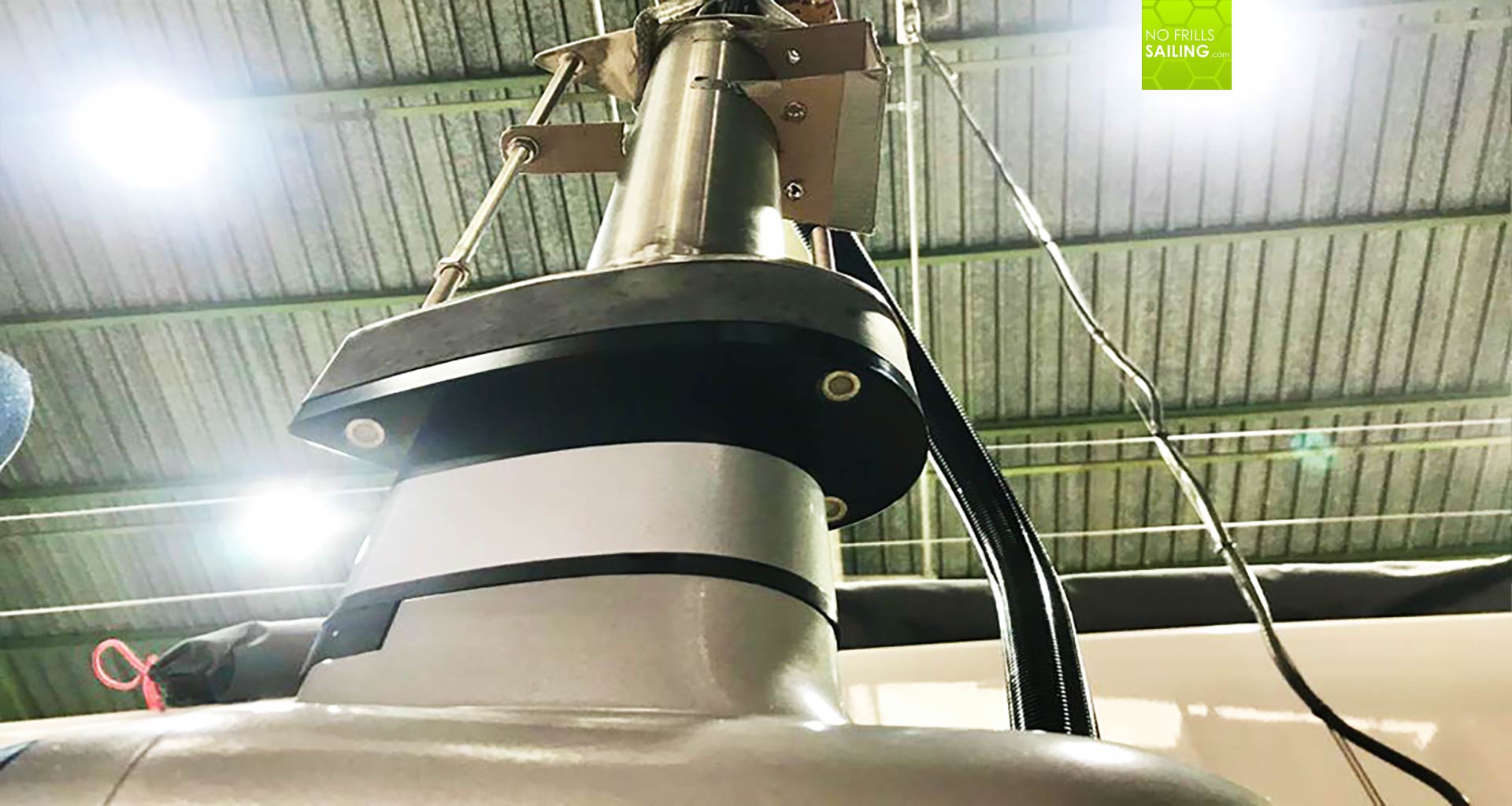
When I first received the pictures from the workshop I was really amazed by the work. We do customizations in the boats we sell, but this is usually standard equipment to be fitted. Construction work, prototyping and coming up with own solutions is not our daily business. “We have a steel specialist around the corner”, Olaf, our mechanic, told me: “I met him in the first place, showed and explained what we needed. His price quote was 900 Euros …”, said Olaf and looked at me. Unacceptable, of course. Now we did it on our own and the outcome seems to be just great.
Dress rehearsal and fitting
The crew fitted the newly built shaft extension to the pod, inserted the wireworks and connected everything. The drive unit was then put on our yard´s crane and rose up to the air, just next to the very boat it was about to be installed into. Connecting the battery to the unit and having – provisionally – attached the throttle unit as well, a dress rehearsal started. And it all worked out fine.
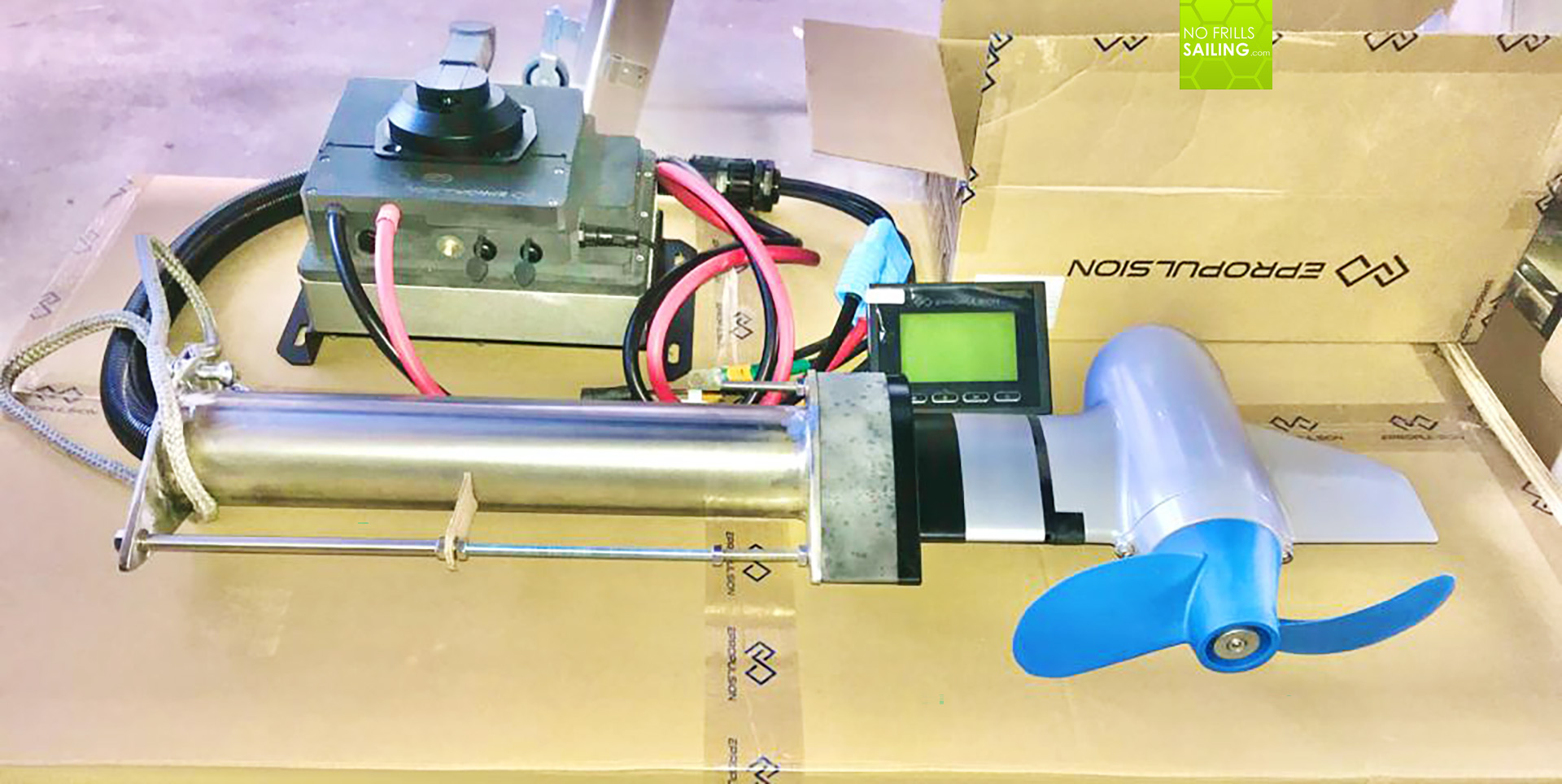
Now my colleague is welding the shaft unit completely and sandblasting the whole construction to remove marks of the work that has been done. The aim is to complete a flawless piece of equipment that nobody will recognize as a custom-made part. First trials for sliding up and down the new piece inside the boat´s engine shaft have proven a perfect fit and I am very happy for the boat and the owners that we have been able to fit the E-Propulsion engine unit regardless our initial troubles. Nice work, mates!

So, the outfitting of this brand new First 27 SE with her engine setup is going to be finished within the next two weeks. That is the time frame I planned as well for GEKKOs solar panel-project to come to a positive end as well. GEKKOs installation will act as a role model setup for her sister ship too. As I wrote before, the owners ordered an exact copy of my boat, so our guys prepare to install new solar panels soon. In the meantime we managed to gain one of the rare berths in my home port for this new First 27 SE too and I expect to see both boats hit the water mid-May. Which, of course, will culminate into a side-by-side real life comparison of two identical boats sporting Torqeedo and E-Propulsion. Exciting!
Also interesting to read on electric propulsion boats:
Fitting the Torqeedo Cruise Engine, parts 1 and 2
Opting for E-Propulsion
Sustainable boat building, is this even possible?
